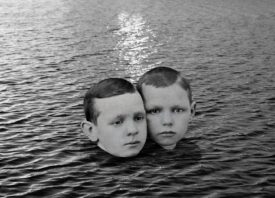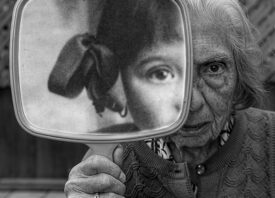Search this site
Poignant Photographs Reveal the Suffering of Dementia Patients


In the 1980s when Virgil DiBiase was in medical school studying neurology, there were 500,000 people with dementia in this country. In just four decades, that number has skyrocketed to nearly 6 million people, with projections of 300% growth by mid-century. If we make it to old age, an estimated one in three people will fall victim to the disease.
Defined as, “A chronic or persistent disorder of the mental process caused by brain disease or injury and marked by memory disorders, personality changes, and impaired reasoning,” dementia is a broad category of brain diseases that progressively decrease one’s ability to think and remember in am manner which can severely affect daily functioning. Alzheimer’s Disease is both the most common and well-known type.
“There is no cure for dementia but that doesn’t mean we can’t take care of the people in a humane way,” DiBiase writes in the artist statement for his series, My husband won’t tell me his first name, which recently won second place at the 2020 Center Editor’s Choice Award.
After DiBiase began spending time with his patients at their homes, transforming the portrait sessions into a social event, his patients would return to he clinic for sessions with an emotional memory of the interaction. Two years ago, dementia struck home when DiBiase’s father fell victim to it. “He said to me: ‘get me out of here,‘ a metaphor for being trapped cognitively by his disease,” DiBiase writes.


With this understanding, DiBiase set forth to create a visual language of dementia for viewers to understand the inner state of those who suffer from the illness in order to convey the complexity of their experiences.
“I’ve been making Pt/Pd prints of perceptions, using quotes from my patients to visually shape my photos,” DiBiase writes. “They may have the same disease but they experience it in unique ways. They are unique individuals, just as non-demented people are. And just as Platinotype prints are unique even when printed from the same negative.”
Metaphorically this process parallels his relationship with his patients, just like any relationship. “These are unique individuals and anything goes. It takes patience. This project deserves a handcrafted process rather than inkjet prints or even silver gelatin prints where every print looks the same. I would like to preserve these memories in photographs. Platinum prints are very stable, but memories are not.”
DiBiase’s photographs offer a window of understanding into a world where reason has lost its grip, and those suffering from the disease are now subject to a mind they can no longer fully control. “With this project I wish to humanize a truly dehumanizing disease,” DiBiase writes. “Behind these statistics are people with a full range of emotions: humor, anger, longing, fear, love and hope. Look at these images as if you are looking in the mirror. How would you like to be cared for when it’s your turn? It is our destiny.”




All images: © Virgil DiBiase


